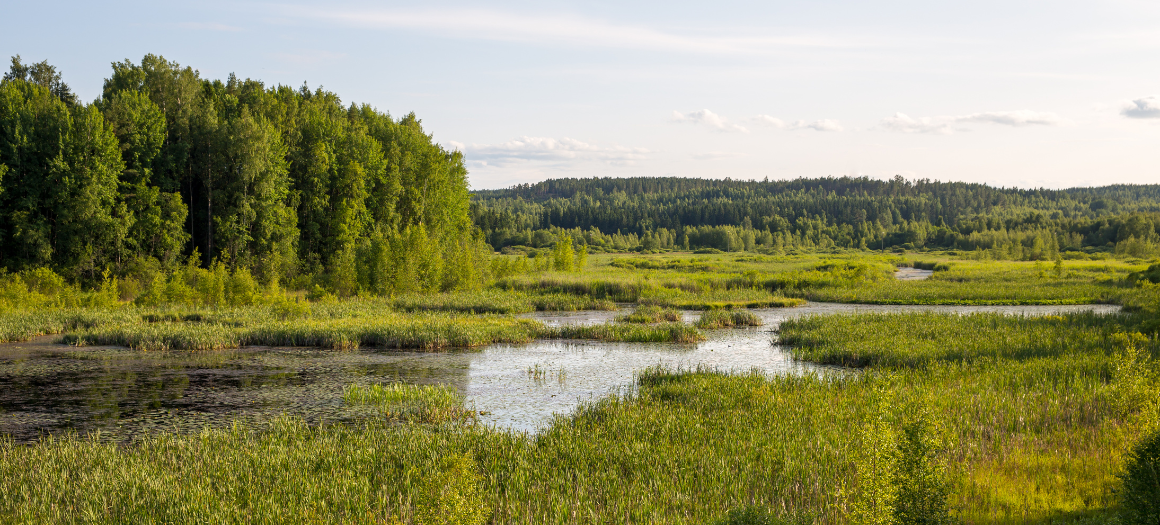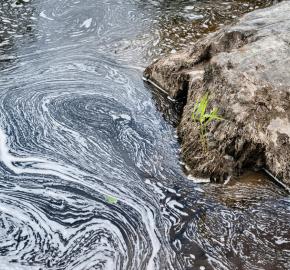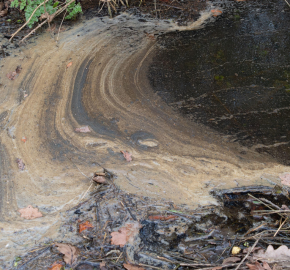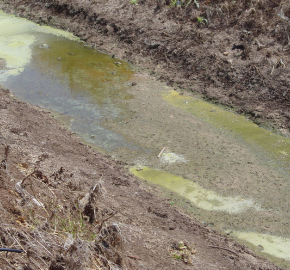Saving our wetlands by farming back

River-side land and naturally wet ground (farmed or unfarmed) should be viewed as the most precious land that we have both ecologically and economically. It is urgent that we farm back from rivers so they are not fed by pollutants every time it rains, and we need to give rivers the space they need to move and to flood, wherever possible.
A delicate balance exists between agriculture and nature. How can we improve the outlook for wetland wildlife and at the same time make it less tough for farmers?
The challenges facing farming practices
After heavy rainfall water laden with topsoil, nutrients and a cocktail of other pollutants frequently washes off farmed fields into ditches, streams and thence into lakes and estuaries. We lose the very stuff that feeds us to the ocean and soil scientists ask a question that should never be: how many harvests do we have left? Is it 40, 100, 200? At the same time, with challenges posed by wet fields, deep drainage schemes are employed that damage farm wetlands and lead to a quicker and more efficient transfer of polluted water from field to stream. If that is not enough flood events, that get larger every year, keep on engulfing properties and people’s lives.
The impact of farming on river environments
Decades of well-intended catchment sensitive farming, as well as water and soil protection measures employed via agri-environment schemes, have no doubt reduced our water pollution problems, but in no way have they been solved. As winter moves into spring and then summer, anglers, naturalists and conservationists go to their favourite river sections and hope for the best. With luck they find thick, green meadows of water crowfoot wafting over a bright clean riverbed. More often they are greeted by 10 cm of silt burying and entombing over-wintering plants and their regenerative structures. Spawning gravels are swamped by fines and as the water warms nutrients are quickly translated into blankets of filamentous algae and in larger rivers plankton blooms. The architecture and life support systems of a river are deadened by these processes. Downstream lakes and estuarine habitats that receive this water also feel the pain.
The approach to solving water pollution
We need to think bigger and adopt a new approach underpinned by best practice restoration ecology principles. We need to treat the cause of the problem and not the symptoms. Restoration and land-management work needs implementing at a scale which matches the scale of the actual problem – the whole-catchment scale. So many times conservation projects focus on treating the symptoms of the problem and less so the causes, with emphasis on quick wins. But are we really winning?
Reducing the impact of sediment pollution
A frequently adopted approach to tackling sediment pollution is to build interception ponds and sediment traps. These no doubt help a little, but during big rainfall events fine sediments simply travel over the top of even the biggest of these ponds. Such systems do not keep soil on fields where it needs to be, and the future harvests number continues to drop. Buffer strips is another approach. But how much does a 5-10 m green strip help? Science support for a thin buffer making a major difference is not really there. We need to do more and this includes better sewage treatment too – but that is another story!
Managing floodwater
Our approach to flooding is multi-faceted. There is Natural Flood Management emphasis on a need to “slow the flow” in headwater ditches and streams via use of leaky dam structures, beavers and promoting forest development. But all too often we forget about the urgent need to “store the flow”. To reduce the impact of big floods no amount of flow slowing will help. What we really need is somewhere to put flood waters, but so much of the floodplain along our lowland rivers is separated from rivers by embankments or is built upon. Fundamental land-use change is needed. Here comes a vision that I will cling to forever…
Farming back and farming for water in practice
Embankments that isolate rivers from their floodplains need to be removed. As a major priority, floodplain land that is farmed needs to be taken out of production.
 Alder trees returning to a river edge just one year following flood bank removal ©Carl Sayer
Alder trees returning to a river edge just one year following flood bank removal ©Carl Sayer

Complex habitat as the result of natural tree-fall in rivers illustrating the rapidity of natural river recovery if trees are left alone. ©CarlSayer
We need to think 100s of metres rather than 10s for buffers of headwater streams and ditches and, where known, repeat soil loss offender fields should also be added to the wetland network. Let’s look up and out into the wider countryside at all other remnant wetlands too. Lakes should be afforded equal protection to our much more trumpeted rivers.
Ghost ponds buried beneath fields could be resurrected with very little loss of land and existing overgrown ponds could be restored by scrub and sediment removal. All of these habitats could then be connected into river corridor spines via hedges and field margins. River corridor wetlands should be left to natural wet forest development or be managed as species-rich hay meadow, grazing meadow and fen. We need to make sure that any field drains are broken before they enter these critical wetland areas.
If we can adopt these practices water quality in our rivers and downstream lakes will get better and better. We will see the return of clear waters, even when it rains. Imagine a transparent-coloured flood. Farmers and conservationists in the Wild Ennerdale project have probably seen this and in many of the wilder, less developed parts of Britain we could see the same.
The benefits of farming back and standing back
In about a decade there will be well wooded riverbanks. If trees are allowed to fall into river channels, fish and other water-dependent species will have the complex habitat structure they need. A tree-filled river, with beavers present also, will be a recovering river. As floodplain habitats are re-wetted and re-supplied by river-derived seeds, wetland plants, insects and in turn birds and mammals will flourish. Rivers will start to become dynamic again and river corridors will become inspiring habitat mosaics. All of this will make us happier too.
 (Above and below) Wild complex river floodplain habitat generated by treefall and re-wetting. This wetland area contains a mosaic of ponds formed by natural tree fall and historic excavations that have been allowed to fill with water simply because the floodplain is connected to the river and has been left to wild processes. ©Carl Sayer
(Above and below) Wild complex river floodplain habitat generated by treefall and re-wetting. This wetland area contains a mosaic of ponds formed by natural tree fall and historic excavations that have been allowed to fill with water simply because the floodplain is connected to the river and has been left to wild processes. ©Carl Sayer
 ©CarlSayer
©CarlSayer
Harmonisation of farming and wetland wildlife
Allowing rivers to run through much widened and wilder river corridors will reduce flooding of property and infrastructure by increased floodplain water storage, elevated carbon sequestration and the re-generation of large areas of highly connected species-filled habitat. Farmers will be farming wetland wildlife.
Maybe, in time, farming will go through a culture change. Rather than farming all possible land, perhaps the question will be asked: how much land can we not farm and how much wetland can we get on the farm?
Could that wet bit in the corner of a field, that in some distant age was a part of a great swamp, be seen as a potential wetland as opposed to an area where deep expensive drains are needed. Well directed funded could make this happen.
Will the Governments new Nature Recovery Network embrace this long-term vision? Will developing carbon credit systems help? I don’t know the answer and I am sure that most farmers and land managers don’t know what to expect either. Here is our chance.
More of the same? Or well-funded, long-term, catchment-scale wetland restoration?
Trustee, Professor Carl Sayer of University College London, is an expert on freshwater wetland restoration. In this guest blog he argues that UK freshwater habitats can be recovered if we think big and address causes rather than symptoms of decline.




That’s a big ask 100 m buffer zones.
But correct.
In lowland rivers such as many in West Wales, the old riverside meadows were the most productive for grassland.
They are now used to grow maize right up to rivers edge as they produce a fantastic crop, and easy to harvest in a wet autumn as the fields are flat.
Remember it’s all about maximum production down here!Maximum.